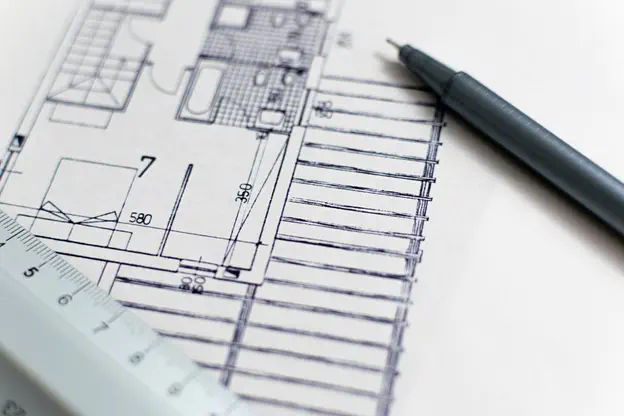The 'Outline' Method for Scientific Writing
 A black ink pen and a white ruler lie on either side of an engineer’s sketch of a building. Image by Lorenzo Cafaro from Pixabay
A black ink pen and a white ruler lie on either side of an engineer’s sketch of a building. Image by Lorenzo Cafaro from Pixabay
The writing process consists of several steps: prewriting, drafting, revising, editing, and publication. The outline is generated during the prewriting stage and, while necessary to describe the broad structure of an article, it is rarely revisited.
The outline drafting method, however, expands on the original outline to structure the drafting process.
Beginning with the original outlining of the topic, major supporting topics, and key points, this drafting process gradually increases the level of detail for each section. This continues until every potential paragraph has been outlined to the appropriate degree of detail. All appropriate definitions, explanations, descriptions, evidence, or examples should be included along with any quotes that might be incorporated within the text.
Introduction
- The writing process
- Prewriting
- Outline
- rarely revisited
- This method expands the outline
Description
- Increase the detail
- outline each paragraph
- Including more than facts
- rewrite in full sentences
- add transitions
Conclusion
- Helps with
- short bursts of writing
- writer’s block
- almost exactly match the outline
- may require more transition revisions
When as much detail has been added as possible, each fragment of the detailed outline is rewritten as a full, and complete sentence. Given that each sentence and paragraph will be drafted in isolation, the essential final step in the outline drafting method is to add the appropriate transitions between paragraphs and statements.
Introduction
- The writing process consists of several steps: prewriting, drafting, revising, editing, and publication.
- The outline is generated during the prewriting stage.
- The outline is rarely revisited.
- The outline drafting method expands the outline to structure the drafting process.
Description
- The original outline of the topic contains the major supporting topics and key points.
- The level of detail for each section is gradually increased.
- Each paragraph is outlined.
- Include any definitions, explanations, descriptions, evidence, or examples along with any quotes that might be incorporated within the text.
- Each fragment of the detailed outline is rewritten as a full sentence.
- The final step is to add transitions between paragraphs and statements.
Conclusion
- The outline drafting method is particularly helpful for those who work in short bursts and/or have severe writer’s block.
- The complete first draft should follow the beginning outline (that you and your advisor agreed on) almost exactly.
- The first draft may require more transition revisions than other drafting methods.
The outline drafting method is particularly helpful for those who can only work for short bursts and/or have severe writer’s block. The complete first draft should follow the beginning outline (that you and your advisor agreed on) almost exactly, though it may require more transition revisions than if it were written using other drafting methods.
References
Handout: From Outline to First Draft
The introduction and full list of methods for writing the first manuscript draft.